The 15km underground sewage pipeline of the Yen Xa Wastewater Treatment Plant project is complete, ready to rescue the polluted To Lich River. This special technology is being applied for the first time in a project in Hanoi.
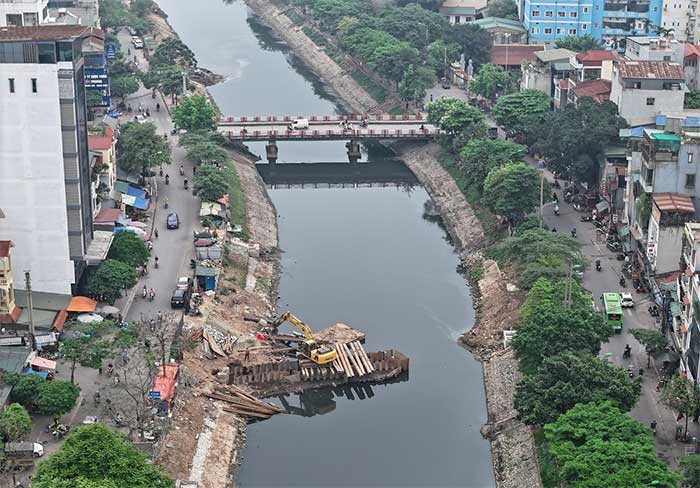
Eight years since its construction began, the Yen Xa Wastewater Treatment Plant (Thanh Tri District, Hanoi) is rapidly completing many important components to conduct trial operations at the end of this year. The project is divided into four packages, with Package No. 2 focusing on building the wastewater collection system for the To Lich River, executed by Tekken Company (Japan). This package commenced on March 16, 2020, and has now reached 93% completion.
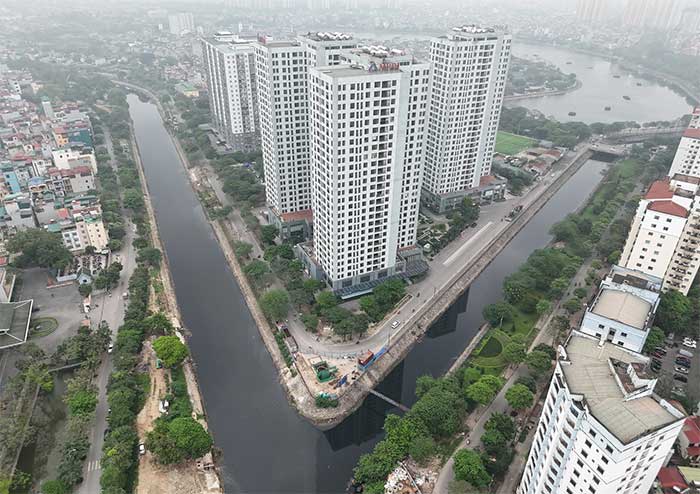
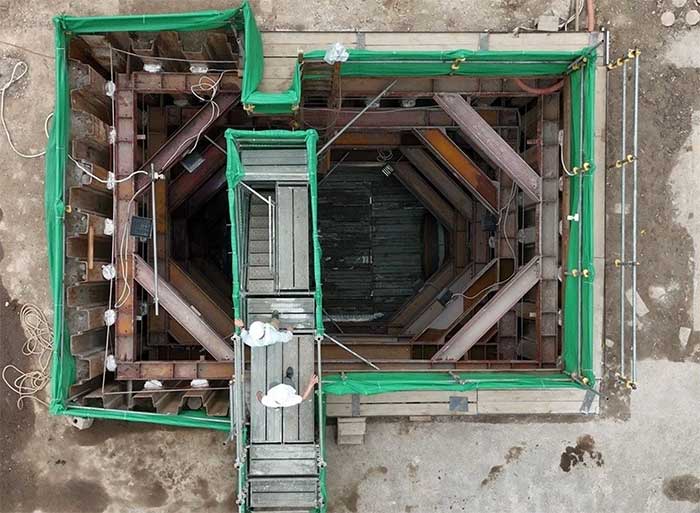
For this package, the contractor will install the underground pipeline running along the To Lich River, starting from the intersection of Hoang Quoc Viet to the confluence of the To Lich and Lu Rivers in Hoang Mai District (location shown in the image). The method of open excavation is used for a small portion of the pipeline, while the remaining sections utilize a new technology called robotic trenchless drilling.
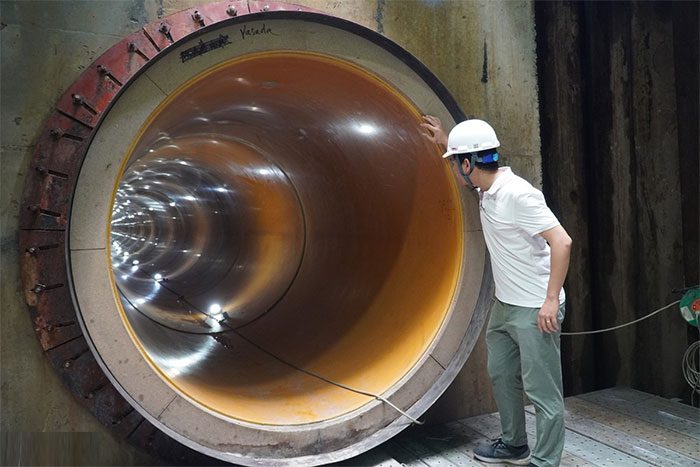
With the trenchless drilling technology, the contractor will initially excavate vertical shafts, reinforced with pile foundations, and then lower the robot to the bottom of the shaft to drill horizontally, connecting the shafts together. The underground pipeline connecting the two shafts at the confluence of the To Lich and Lu Rivers has the longest distance (550m) and is located at a depth of 13.44m beneath the road surface. The pipeline is made of concrete coated with waterproof and anti-corrosion epoxy paint.
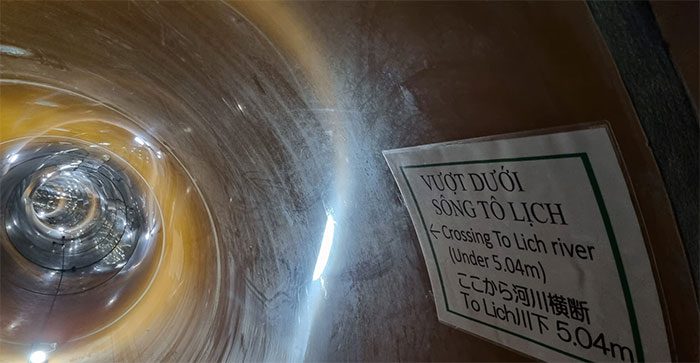
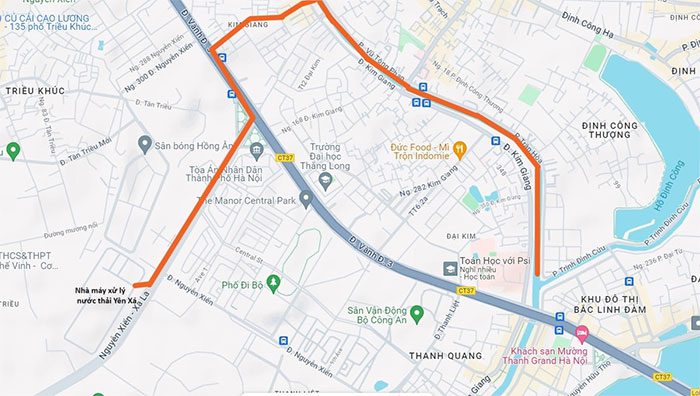
Along the route running parallel to the To Lich River, the pipeline will vary in depth at different locations and will have several sections running beneath the riverbed.

Mr. Chong Jiun Yiat, Project Director for Package No. 2, stated that the trenchless drilling technology is being applied for the first time in a project in Hanoi. For this package, Tekken has completed 100% of the open excavation and trenchless drilling components, with 87% completion for the manhole construction and 85% for the installation of branch pipelines. The contractor is racing to finish all tasks by the end of this year. The biggest obstacle currently is that Hanoi has terminated the contract with the contractor for Package No. 3 (installation of the pipeline system on the Lu River). Therefore, Tekken indicated that the installation of the manhole at the confluence of the Lu and To Lich Rivers cannot be completed yet.
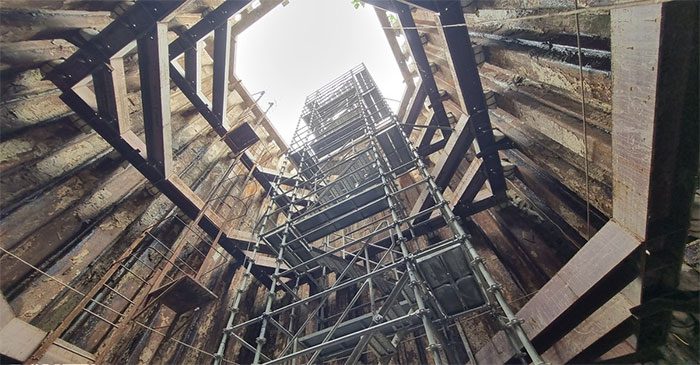
At the location of the underground shafts, the contractor has also designed access routes for the construction process. Mr. Chong rated the construction of the shafts as the most challenging aspect of this package, as the contractor must relocate many surface utilities such as water supply pipes, drainage systems, telecommunications cables, and electrical wires during the implementation. The team is working while monitoring whether the trenchless drilling affects the infrastructure above ground.

On April 16, Secretary of the Hanoi City Party Committee Dinh Tien Dung and his delegation inspected the field at Package No. 2, directly checking the underground sewage system under the To Lich River at the confluence of the Lu and To Lich Rivers (Photo: Hanoi Moi).

After passing through the collection system, wastewater will be directed to the Yen Xa Wastewater Treatment Plant. Construction of this plant (Package No. 1) is 96% complete, awaiting synchronization with Packages No. 2 and No. 4 (building the pipeline system for part of the Ha Dong area and the new urban area) for trial operation this year.
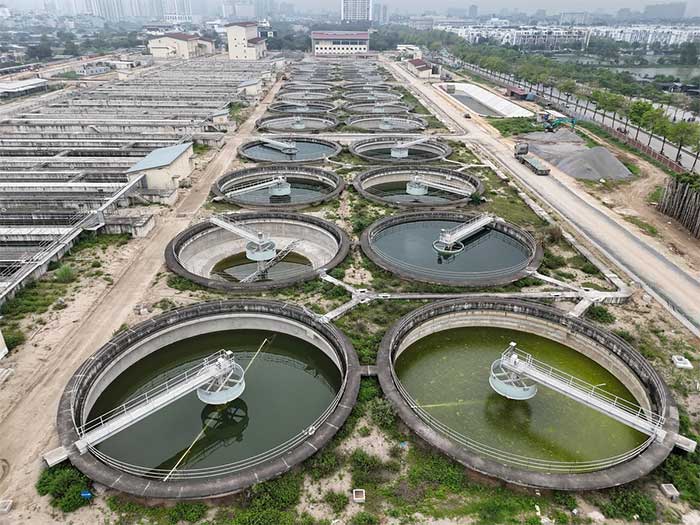
The Project Management Board for the construction of technical infrastructure and agriculture in Hanoi (the investor) is also requesting the Hanoi Department of Construction to soon provide opinions on the policy to continue investing in 9 primary settling tanks and 6 gravity sludge compression tanks using city capital. This is to ensure the completion of the treatment process of the plant, the water supplementation solution, and the sludge treatment technology as directed by the city.
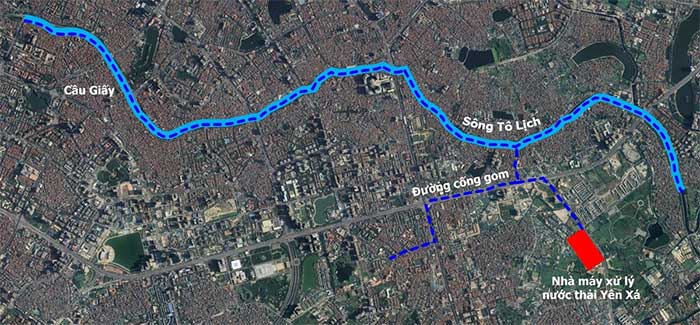
Diagram of the system directing wastewater from the To Lich River to the Yen Xa Wastewater Treatment Plant (Graphic: Ngoc Tan).
Once operational, the project will help treat domestic wastewater from 7 districts: Hai Ba Trung, Dong Da, Ba Dinh, Tay Ho, Cau Giay, Ha Dong, and Thanh Tri. Hanoi also hopes that the project will “rescue” the polluted rivers of the capital, including the To Lich, Lu, Set, and part of the Nhue Rivers.
The Yen Xa wastewater treatment system project includes the construction of a wastewater treatment plant with a capacity of 270,000m3 per day; the construction of a collection pipeline system, a perimeter pipeline, and connection systems (along both sides of the To Lich and Lu Rivers), in the new urban area of Ha Dong. The total length is approximately 52.62km.
The plant is being built in Thanh Liet Commune, Thanh Tri District, covering an area of about 13.8ha.
The total investment for the project is 16.293 trillion VND, with over 84% being ODA loans from the Japanese government.
The project has been underway since 2016, initially aiming for completion in 2020, then postponed to 2022, but has yet to be operational. The new deadline set by Hanoi for the operation of this system is 2025.


















































